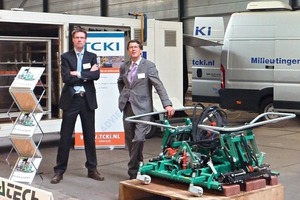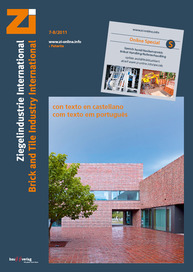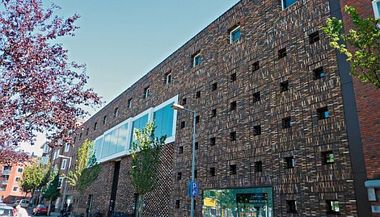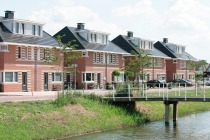Successful “Building Ceramics Conference” in Amsterdam
Dr. Dick Tommel, Chairman of VKO, welcomed the guests, expressing the hope that the attendees would leave the conference with many new insights. He emphasized that it is very important for VKO to champion everything that supports the future of the ceramics industry.
With reference to a number of architecture examples, Jos van Eldonk, Soeters van Eldonk Architecten, discussed the dialogue between people and buildings. Brick architecture in particular can delight people with a variety of design possibilities, be it with reliefs, joint or lintel design, with different brick bonds, prefabricated brick elements, etc. It was important, he said, to make a town vibrant so that people like living in it. With impressive before- and after-examples, e.g. Gouda Town Hall or “Kessler Stichting” in Den Haag, he underpinned his theories.
A very interesting talk on building in the Netherlands was given by Dr. Nico Rietdijk, Secretary of the Netherlands umbrella association for project developers and building contractors (NVB). You can read the paper, which discusses the influences on property construction at www.zi-online.info.
The well-known architect Marlies Rohmer (Architectenbureau Marlies Rohmer) hit the nail on the head: as an architect, you have to build for the next generation! Particularly important to her is the anchoring of the structures in the social context. A beautiful example were, she said, the Amsterdam canal side houses, where people enjoy sitting together in front of their front doors. In most cases these are patchwork models of old and new buildings that fit in and harmonize with each other. With the Amsterdam multicultural centre, Rohmer presented a successful example of how a wide range of requirements had been skilfully met under one roof.
In the afternoon, the topics of “sustainability” and “innovation” were discussed in two sessions. Prof. dr. ir. Anke Hal, TU Delft/Nyenrode, emphasized, for example, that not only the context of the construction sector was changing, with new standards and business models. The pursuit of “sustainability” and the demand to create “quality” influenced construction. The most important question was, she said, always: “What do people want?”
Martin Jansen, Architecten Alliantie, reported on the building of passive houses and presented the principles of these as well as the requirements that these must meet.
Successful projects with new building ceramic products were presented by Jurgen van Staaden, Santman Van Staaden Architecten. Examples of this are the Click-Brick system from Daas Backsteen or vertically laid facing bricks.
The use of recycled tiles was the topic addressed by Erik Slangen, Koppert + Koenis Architecten, and José Maase, Koninklijke MOSA. They presented the cycle from raw material back to the raw material and enlarged on the topic of “CO2-free building”.
Prof. dr. Jacqueline Cramer, RUU/UCAD, appealed to the attendees to be consciously sparing in their use of energy and raw materials. One of the most important challenges of the 21st century was, she explained, ecological and effective production. Even in countries like China, India, Brazil, etc. a trend towards sustainability could be registered. It was necessary to switch from defensive to innovative behaviour, this included aspects such as cost reduction, increasing the market share and innovation, reducing risks and distribu-ting products or services. All this were the basis for innovations in building ceramics, which can look back on a long tradition.
To conclude the conference, Dr. Johann van de Gronden, director WWF The Netherlands, presented the “symbiosis of building and nature”.
During the concluding buffet reception, attendees had the opportunity to talk in greater depth about the different papers.
Dipl.-Ing. Anett Fischer










